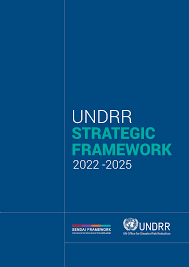
https://www.undrr.org/disability-inclusion-disaster-risk-reduction?utm_s...
At risk
- Persons with disabilities make up at least 15% of the global population (World Report on Disability 2011)
- 71% of persons with disabilities do not have an individual preparedness plan for natural disasters (UNDRR, 2013).
- 13% of persons with disabilities have no one to help them to evacuate (UNDRR, 2013).
- About 85% of persons living with disabilities have not participated in community disaster management and risk reduction processes in their communities (UNDRR, 2013).
- Only 20% of persons with disability say they would be capable of evacuating immediately in the event of a sudden disaster (UNDRR, 2013).
- Persons with disabilities were twice as likely to die in the Great East Japan Earthquake of 2011 (Disability Information Resource, 2012).
UNDRR’s strategy on disability inclusion
Under the Sendai Framework governments have committed to finalize their national and local strategies in disaster risk reduction (Target E) by 2020 and until today about 118 countries have reported having done so (Sendai Framework Monitor). Based on a UNWOMEN and UNDRR’s jointly developed policy tracker, 81 out of a possible 193 Member States have a policy related to persons with disabilities.
Within UNDRR’s new Strategic Framework for 2022-2025, disability inclusive disaster risk reduction activities are not only mainstreamed throughout strategic objectives but also included for the first time as dedicated results and deliverables in support of disability inclusive disaster risk reduction. This is an important step recognizing the importance to move from selected engagement to systematic implementation.
UNDRR is committed to implement the UN Disability Inclusion Strategy. We have nominated a Focal Point to move forward on the overall UN commitment
Need for disaggregated data
To better understand how disasters impact different members of a community, the Sendai Framework calls for “the open exchange and dissemination of disaggregated data, including by sex, age and disability”. To date, many challenges hinder the collection of disaggregated data such as additional costs, time and resources, data privacy concerns, and outdated data infrastructure.
Guidance on Sendai Framework Monitor (SFM) Sex, Age and Disability Disaggregated Data (SADDD)
Disability Stakeholder Group
Working closely with the Disability-inclusive DRR Network (DiDRRN), UNDRR helps building multi-stakeholders’ partnerships between Governments and other stakeholders to support and empower persons with disabilities at national and local level.

We know from many tragedies that without careful planning and foresight, disability can be a determinant factor between life and death in a disaster situation.










Add new comment